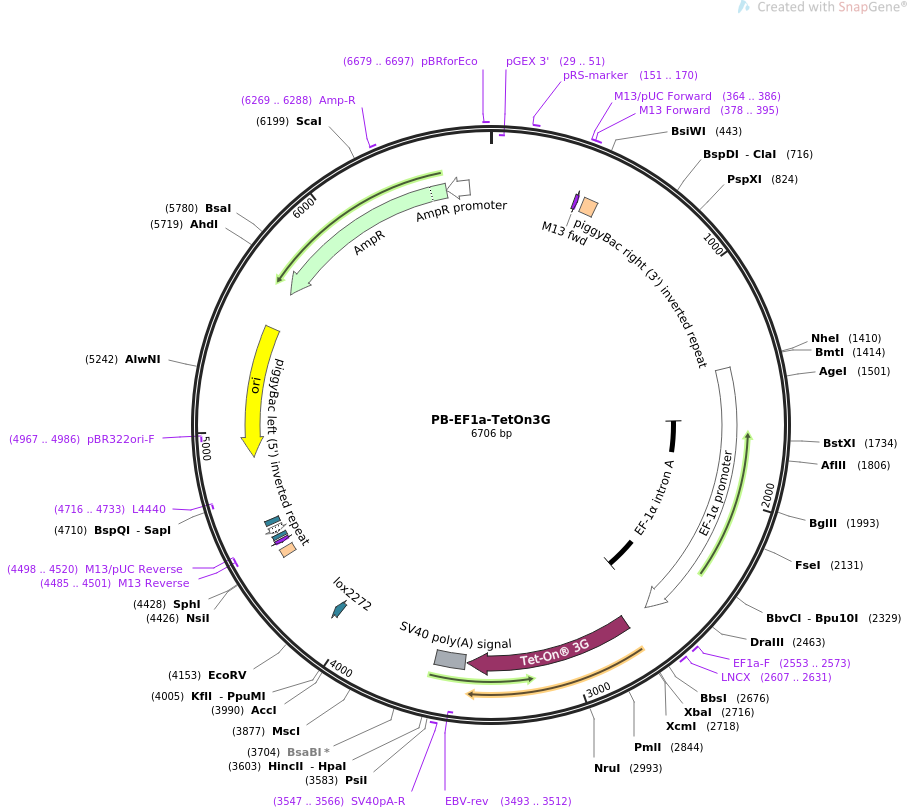

#Snapgene ef1a registration#

Authors are encouraged to include this statement when submitting to a journal. Thank you for including a funding statement.Thank you for including a conflict of interest statement.Results from JetFighter: We did not find any issues relating to colormaps. Results from Barzooka: We did not find any issues relating to the usage of bar graphs.
#Snapgene ef1a trial#
Results from TrialIdentifier: No clinical trial numbers were referenced. Two thirds of cryptically spliced RNA molecules would be out-of-frame and would not just impact protein yield but any translation in vivo would generate novel peptides with potential immuno. In vitro expression offers opportunities to improve homogeneity by application of purification methods. The impact of this will be dependent on the nature of the product, whether it is expressed in vitro or in vivo. Hundreds of randomly spaced splicing events characterized by the cDNA direct sequencing approach for the S protein and similar events seen in other proteins highlight the fact that even when the transgene’s CDS is apparently well designed and expression of full-length protein can be detected, the status quo design is just not optimal for RNA expression as transcript heterogeneity will inevitably impact both product levels (yield) and homogeneity.
#Snapgene ef1a full#
Reported here are distributions based on the full length read population alone within each sample, but care should be applied before comparing these frequencies to other datasets with different sample preparation methods, such as the ChAdOx1 Nanopore RNA direct data (Sup Figure 8). Results from LimitationRecognizer: We detected the following sentences addressing limitations in the study: The main limitation lies in the quantification of the observed events in comparison to the reads without events which can be influenced by size dependency of some of the sample preparation steps as the full-size S protein cDNA is over 4kb long and many of the observed splicing events can be shorter than 200 bp and depleted by many sample preparation methods. Results from OddPub: Thank you for sharing your data.

Suggested: (PromethION, RRID: SCR_017987) Provision of a more natural genomic landscape offers a novel way to achieve multi-fold improvement in transgene expression. By inserting multiple short introns throughout different transgenes, significant improvement in expression was achieved, including >7-fold increase for Spike transgene. Similar splicing characteristics were also observed in other transgenes. While different codon optimization strategies increase the proportion of full-length mRNA, they do not directly address the underlying splicing issue with commonly detected cryptic splicing events hindering the full expression potential. The cDNA of the Spike protein harbors over a hundred predicted splice sites and produces mostly aberrant mRNA transcripts when expressed in the nucleus. While SARS-CoV-2 genes and hence its codons are presumably well optimized for mammalian protein translation, they have not been sequence optimized for nuclear expression. The natural habitat of SARS-CoV-2 is the cytoplasm of a mammalian cell where it replicates its genome and expresses its proteins.


 0 kommentar(er)
0 kommentar(er)
